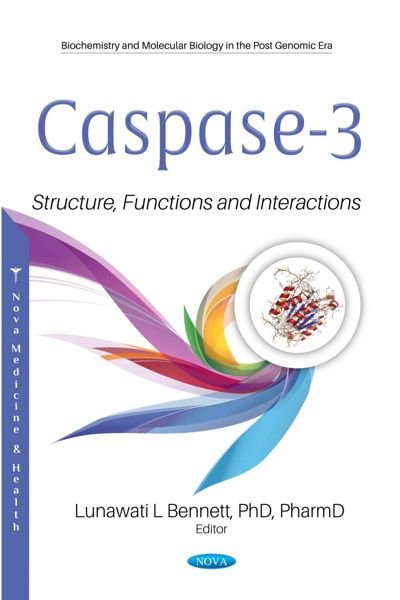My Books
I love to write about life, faith, and the Christian life. I also do technical writing that lines up with my professional responsibilities.
Ebenezer
Published: August 1, 2023
Within the pages of these 22 chapters, I present my ‘Ebenezer’—a poignant monument of remembrance, celebrating God’s unwavering faithfulness in my journey through life. Just as the ancient Israelites set up stones to acknowledge God’s great help, I employ this ‘Ebenezer’ to recall His continuous guidance, support, and conviction, fostering a closer walk with Him. Throughout these chapters, I intertwine my own stories and those of dear friends, skillfully weaving them with timeless biblical events and figures. As each narrative unfolds, I unveil the profound lessons learned and God’s hand that has been at work in my life.
At the conclusion of each chapter, I provide ‘Verses for Meditation,’ carefully selected passages that align with the story’s essence. Additionally, ‘Questions for Reflection’ prompt introspection, inspiring readers to contemplate how these experiences might shape future actions. The ‘Continue in Prayer’ section humbly seeks God’s continued guidance and wisdom, as we earnestly learn and grow together.


Joyful Living To Leave A Legacy
Published: February 17, 2022
This 32 short chapter book is about my personal journey, things that I learned along the way. There were many things that I did wrong. It took years sometimes to see my faults before I tried to learn from them. There were also things that I did right, and I would like to share my personal experience with you. My prayer is that this book will help you as we journey life together with its ups and downs. At the end of every chapter, I have “Lessons to Share” section divided into 3: Joyful, Living, and Legacy.
Legacy of Endurance, Meekness, and Faith
Published: April 20, 2022
This book was written as a memoir of our parents and grandparents from whom each has left a legacy for us to remember. Hoping the book will be valuable for our own children, grandchildren, great grandchildren, and friends to cherish about their legacy in Endurance, Meekness, and Faith.


Consumers Guide to Prescription and Over the Counter Medications
Published: December 2017
This is a comprehensive reference guide for consumers to refer to when questions about their or their loved ones diseases or medications arise. The book is organised based on common disease states via different body systems: Cardiovascular disorders (high blood pressure, heart failure, heart rhythm problems); respiratory disorders (emphysema, chronic obstructive pulmonary disease, asthma, tuberculosis); gastrointestinal disorders (irritable bowel syndrome, gastro-oesophageal reflux disease, constipation); endocrine disorders (diabetes, thyroid, polycystic ovarian syndrome); central nervous system disorders (depression, anxiety, bipolar, Alzheimers); infectious diseases (bacterial, viral, parasitic, fungal); pain disorders (migraine, headache); and miscellaneous disorders (glaucoma, psoriasis, smoking cessation, weight management).
The book also includes common over the counter dietary supplements and vitamins, and their usage and toxicity levels to watch out for. Each disease state subgroup includes: a short summary of the causes of the disease, general treatment guidelines, and different classes of drugs useful to treat the disease. The summary also includes non-pharmacologic approaches to better manage the disease. The medication information is organised in easy-to-read tables with information that includes drug names, mechanisms of action to help readers understand as to why they are being prescribed, how/when to take the drugs, storage of the drugs, common and serious side effects, contraindications (when it should not be used), and some important drug-drug interactions.
Please do not self-treat your disease. Make sure you follow the information and instructions from your healthcare providers (doctors, pharmacists, nurse practitioners, and physician assistants) regarding how to take your drug regimens.
Caspase-3: Structure, Functions and Interactions
Published: October 30, 2020
“Caspase 3: Structure, Functions and Interactions” is a book designed as an educational resource for researchers and health care providers who want to learn more about caspase 3. Physicians, pharmacists, other health care professionals can benefit from learning about the function of caspase 3 and its role in diseases and possible treatment options of using caspase 3-like compounds. New or seasoned scientists with research interests in caspases can learn novel ideas or interventions using caspase 3. Caspases are a family of enzymes that play an important role in developing normal organ formation and function, maintaining homeostasis, and regulating cell death and inflammation. There are 14 known caspase enzymes in mammals, and 12 present in humans. Each caspase varies in purpose and mechanism of action. Caspase-3 is a key cysteine-aspartic protease that is largely known for its role in executing cell death or apoptosis.
There are a total of 8 chapters in the book. Chapter 1 introduces the caspase family, their classification, regulation, and role in apoptosis. Chapter 2 discusses caspase-3 role in causing or preventing diseases such as cardiac, diabetes, and cancer. Chapter 3 highlights the emerging roles of caspase-3 in biological processes beyond cell death. Complex regulatory mechanisms are required to coordinate timely and specific activation of caspase 3. As cancer continues to escalate as a major public health concern, caspase 3 role as the prominent executioner of apoptosis plays a central role as a key cellular protein as discussed in Chapter 4. Chapter 5 highlights our understanding on the activation of caspase 3/9 in starfish unfertilized eggs which elucidate the relationship of apoptosis in the vertebrates and nematodes. Chapter 6 discusses the interaction of caspase 3 with apoptotic peptide known as (KLAKLAK)2. Because of the cationic and amphipathic nature of (KLAKLAK)2, this peptide has the unique ability to cause the formation of apoptosome. Chapter 7 identifies caspase 3 role in central nervous system, aging, regeneration of neurons, and in Alzheimer’s, Parkinson’s, and other neurodegenerative diseases. Chapter 8 discusses biomarker and methods to detect caspase 3, and its interaction with different substrates and compounds.


Frontiers in Leukemia Pharmacotherapy
Published: March 1, 2019
Frontiers in Leukemia Pharmacotherapy provides a comprehensive overview of the various leukemic disorders found in both children and adults, with an emphasis on current and novel treatment approaches for the healthcare practitioner. By focusing on the unique therapeutic challenges of leukemia, this book aims to meet the diverse needs of physicians, pharmacists, nurses, and other healthcare professionals with an interest in serving patients with leukemia. This comprehensive book is divided into nineteen chapters. Content includes information on specific leukemic disease states in both children and adults. Written by researchers and clinical practitioners, chapters cover a wide array of leukemic topics. Topics include understanding the molecular and genetic basis of acute and chronic leukemia, pharmacology of anti-leukemic agents including traditional chemotherapies, targeted immunotherapy, and tyrosine kinase inhibitors. The epidemiology, etiology, pathogenesis, disease classification, clinical presentation, pathologic features, diagnosis, prognosis, and treatment guidelines for myelodysplastic syndrome, promyelocytic leukemia, pediatric and adult acute and chronic leukemia are other topics covered in more detail. Other topics Redox homeostasis occurring in leukemia and the role of antioxidants, supportive care for the leukemic patient experiencing complications from chemotherapy, palliative care for termination of those with leukemia, pharmacometrics using computational modeling to support drug development in leukemia, and future agents that are in clinical trials in our fight against leukemia. Reputable books, journals, monograms, clinical trials, and other resources were used to provide up-to-date medical information useful to assist healthcare professionals in the management of leukemia. Frontiers in Leukemia Pharmacotherapy is an excellent resource for curious healthcare professionals involved in the care of leukemic disorders.
Gaucher’s Disease: From Diagnosis to Treatment
Published: July 13, 2020
“Gaucher’s From Diagnosis to Treatment” was designed as an educational resource for all professionals involved in the care of patients with Gaucher disease (GD). Chapter 1 is an introduction about GD. GD is the most common autosomal recessive lysosomal storage disease (LSD) due to the deficiency or absence of the activity of enzyme glucosylceramidase (GCase) or also known as acid- glucosidase (GBA1) or uridine phosphate glucosylceramide synthase (UDP-GLC). Defects in these enzymes cause miss-sorting or loss function of lysosomal proteins leading to accumulation of glucocerebroside (GLC) in the tissue macrophages monocyte. Accumulation of GLC cause enlargement of the spleen, destruction of bone, anemia, thrombocytopenia, and abnormalities of the lungs. GD is classified into three type 1 GD (GD1) is a chronic and non-neuronopathic accounting for 95% of GD cases, and types 2 and 3 (GD2, GD3) involves nerve cell destruction causing acute brainstem dysfunction or progressive neuroleptic deterioration, respectively. Chapter 1 review disease classification, epidemiology, pathophysiology, and clinical manifestations of GD.

“While my focus has been on scientific publications, I envision expanding my literary horizons to encompass books on Christ’s love and Bible study materials too. Sharing my faith is as important to me as my professional, technical teaching.”
– Dr. Luna
